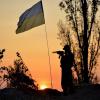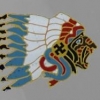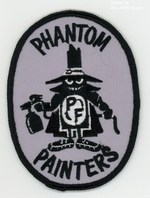Leaderboard
Popular Content
Showing most liked content on 09/08/2020 in Posts
-
7 points
-
5 points
-
5 pointsV2.0 of the Mirage F-1C_81 is uploaded and waiting for approval. We added a new Martin Baker MK4 ejection seat (Thanks to russouk2004). If you want to add this seat to the other Mirage F-1, change the lines below in the data.ini file : [Pilot] SystemType=PILOT_COCKPIT PilotModelName=MF1PilotWh Position=0.0,3.905,0.60 SeatModelName=Seat_F1RM4 SeatPosition=0.00,3.75,0.30 MinExtentPosition=-0.25, 3.60,-0.10 MaxExtentPosition= 0.25, 4.30, 0.80 CanopyNodeName=vitre_canopy CanopyAnimationID=6 And a little preview by Coupi.
-
4 pointsDouglas F-91B Skyshark - 36th Fighter Bomber Squadron, 8th Fighter Bomber Wing, USAF, 1953 The outbreak of the Korean War in June 1950 came just one month after the first flight of the Douglas A2D Skyshark. Even before the Fall of 1950, the USAF could see that it had aircraft to suit every combat role except for the crucial close air support role where it had nothing inbetween the shiny new jets that were short on range and the F-51D Mustangs of WW2 vintage that were short on payload. A USAF evaluation team quickly studied a minimum change version of the Douglas A-1 Skyraider that was by now the backbone of the United States Navy carrier-based attack squadrons having exceptional payload ability and a very long range - indeed, some combat sorties were up to 10-hours long. However, the USAF evaluation team expressed concern that combat reports of these long-range missions constantly referred to pilots literally being dragged out of their cockpits such was their fatigue. In conclusion, the USAF evaluation team considered the A-1 Skyraider to be a good interim machine but recommended a faster follow-on aircraft that still had the A-1's exceptional payload ability. Whilst the USAF were aware of the development problems of the turbo-prop powered Douglas A2D Skyshark they considered that it was a better prospect than any clean sheet of paper project and urged the Department of Defense for more funding to fix the A2D's problems. This re-ignited the United States Navy's interest in it's own program and the resultant joint campaigning effort resulted in more funding for an ambitious accelerated program. With the USAF having withdrawn the A (attack) designation in 1947 the USAF version was confusingly designated F-91* and the prototype YF-91 (converted from the third A2D-1) first flew on July 31st, 1951. Development and testing moved ahead smoothly during the remainder of 1951 and early 1952 with an initial production batch of 12 F-91A's entering service in August 1952 with a joint-service test and evaluation squadron based near the Douglas facility at El Sugundo in California. The main production version was the F-91B which entered service in February 1953 with the 36th Fighter Bomber Squadron temporarily detached to Itazuke Air Base in Japan before deploying to Suwon Air Base, South Korea to commence combat operations in March 1953. Operating in the night attack role the 36th Fighter Bomber Squadron primarily flew bombing and strafing missions against enemy air fields but in May 1953 the 36th succesfully attacked the Kuwonga, Namsi and Taechon Dams. * There's no need to point out that there was a real F-91 (the Republic Thunderceptor) there's not many spare designations in the 'F' era before the Century Series.
-
4 points
-
4 points
-
4 points
-
4 points
-
4 pointsSo far so good...now, fade the demarcation lines on the camo, throw some rocks and dirt at it to make it look "used".
-
3 pointsThe infrastructure of Kuwait Eurofighter Typhoon fighter almost complete at Ali Al-Salem Air Force Base. This will be the home base for the 28 Eurofighter Typhoon fighters. It will be added to the existing airbase as you can see from google map it is identical to the one I modeled for the Ahmad Al-Jaber Airbase, therefore I was thinking of creating an addon model to my existing model of the Ahmad Al-Jaber Base. The first seven Kuwaiti Typhoon pilots graduated from their AMI (Aeronautica Militare Italiana, Italian Air Force) flying training courses on July 5 in a graduation ceremony held at Lecce/Galatina, home to the M346 equipped International Flying School/61° Stormo. Final assembly of the first batch of Eurofighter Typhoons for Kuwait was formally launched in a ceremony at Turin-Caselle on October 15. The Italian final assembly line was bedecked with Kuwaiti and Italian flags for the closed event, with a backdrop provided by the fuselage of the first Kuwaiti two-seater (KT001) in an assembly jig, waiting for its tailfin to be fitted. Leonardo said that the final assembly of the first five aircraft is now underway at the company’s Aircraft Division plant at Turin, while major components of further Kuwaiti aircraft are in production across the four partner nations. This will lead to aircraft deliveries from 2020 to 2023 and the Typhoon will enter Kuwait Air Force service in September 2020. The Kuwait Air Force is undertaking a major modernization and expansion of its fighter arm, replacing 39 F/A-18C/Ds with 28 F/A-18E/F Super Hornets and 28 Typhoons, meaning that induction of the new aircraft will have to be accompanied by an influx of new personnel, including both pilots and groundcrew, while the "Heritage Hornet" pilots and groundcrew will also need to undergo some retraining. On October 14 it was announced that the first batch of Kuwaiti aircraft maintenance technicians for the Typhoon had started their academic training at the Accademia Aeronautica (the Italian air force academy) at Caserta near Naples. The first seven Kuwaiti Typhoon pilots graduated from their AMI (Aeronautica Militare Italiana, Italian air force) flying training courses on July 5. The experienced Kuwaiti pilots had undertaken some training with the AMI's Eurofighter F-2000 operational conversion unit (the 4° Stormo’s 20° Gruppo) at Grosseto, but the graduation ceremony was held at Lecce/Galatina, home to the M346-equipped International Flying School/61° Stormo. The ceremony was attended by the Commander of the Kuwait Air Force, air vice-marshal Adnan Al-Fadhli, who revealed that the AMI training had included specific instruction in commanding Eurofighter Typhoon squadrons and had encompassed maneuvers in Oman and Egypt. These officers will now instruct other Kuwaiti pilots. Kuwaiti interest in the Eurofighter Typhoon emerged in 2012 when a pair of Italian air force Eurofighter Typhoons from the 4° Stormo was deployed to Kuwait for evaluation. Despite very high ambient temperatures (53° C), and high winds (40 mph), the Typhoon reportedly impressed, and in April 2016 Kuwait signed an $8.7 billion contract with Finmeccanica (now Leonardo) for the supply of 28 aircraft (including six two-seat trainers), with an associated training, logistics, and operational support package, including equipment and a suite of training devices to allow the establishment of an operational conversion unit in Kuwait. The contract also included the construction of infrastructure at the Al-Salem Air Base and a three-year package of initial support services (with an option for a further five years). Kuwait thereby became the eighth customer for the Eurofighter Typhoon. Kuwait’s 28 aircraft will be the most advanced examples of the Eurofighter Typhoon produced so far, and the first delivered to the new P3Eb standard. P3Eb provides a package of capabilities that build upon the Typhoon’s previous enhancement programs, using the functional content of P3Ea as what Leonardo calls “a starting technical development baseline.” P3Eb will be delivered in two phases. The KAF entry into service (EIS) standard includes the new E-scan radar (with an EIS capability), AIM-120 AMRAAM (up to C7), and a Meteor initial training capability, ballistic bombs (Mk 82, 83, and 84), the Sniper laser designator pod with downlink, the P5 ACMI pod (providing real-time training for air-to-air gunnery, IRIS-T, and AMRAAM C7), and VOR navigation capability. Later, the KAF Enhanced standard will be introduced. This will introduce an upgraded E-scan radar, Meteor full capability, GBU-31 JDAM precision-guided bombs, Enhanced Sniper (full-range capability), and a P5 ACMI Pod Enhancement. The radar used by Kuwaiti Typhoons is the Captor-E to Radar One Plus standard. This also forms the basis of the four-nation AESA radar development program, with the same hardware and the same performance. The Captor-E radar provides significantly more power than most competing systems. The advanced antenna repositioner gives the Typhoon radar a field of regard of 200 degrees. Kuwait’s Typhoons will be the first to use the Lockheed Martin Sniper advanced targeting pod, following the award of a direct commercial sale contract for 18 Sniper advanced targeting pods, together with integration and logistics support on Sept. 28, 2016. The Sniper pod has recently been upgraded to include two-color laser spot tracking, short-wave infrared, and advanced non-traditional intelligence, surveillance, and reconnaissance modes. The Kuwaiti aircraft will be capable of carrying the MBDA Storm Shadow cruise missile, providing a long-range stand-off capability that the U.S. will not provide with the Super Hornet due to missile technology control regime restrictions. Kuwait’s Typhoons are also due to be equipped to carry DRS-Cubic ACMI P5 combat training pods and will be fitted with an enhanced navigation aid with VOR. A number of test aircraft have been used to clear the Kuwaiti P3Eb standard, with instrumented series production aircraft (ISPA4 ) and instrumented production aircraft flying with Mk 82 500-pound bombs, Mk 83 1,000-pound bombs, and Mk 84 2,000-pound bombs. On December 23, Leonardo began flying ISPA6 on radar, avionics, and weapons integration test sorties credit to https://www.ainonline.com/
-
2 points
-
2 points
-
2 pointsMore virtual concrete to pour for you
-
2 pointsGeezer's work was indeed stellar - top-notch stuff. I was particularly hoping to see the MS Type I and the Bleriot completed, but no word from him on the forums since last year I think. Hope he's doing well. I remember that he was interested in switching over to the Unreal engine for static battle displays and things. Maybe he'll catch the FE2 bug again and visit us sometime. No matter what WW1 sim I fly - FE2 is always my go-to sim for quick combat and good single missions with variety. (There is a Breguet XIV that Geezer was also working on - but it's largely in "alpha" or early beta stage, with several things that were never completed on it. The Junkers J.1 on the other hand, as a model, is pretty much complete - as is the FM on it that I did a couple of yrs. ago - but it lacks a skin. I think that Crawford was working on a skin - but we decided that the Junkers is not really a priority aircraft at this point in time for FE2, so I haven't checked into its status. The N28/28a in the consolidated package is pretty much complete - although there are some oddities with the prop. disc. at various speeds - possibly something that needs tweaking with that model further, since we weren't able to do anything in the data ini to fix the oddity.) In terms of my FM update packs, most of the important aircraft have been tweaked - I will however look at the Snipe and Stephen's Halb. CL.II, and ver. 3 of the Sikorsky S-16 in the future, and I think there was a Pomilio also by Stephen that I never looked over, as well as implementation of Crawford's camera tweaks on the Elephants - maybe for a ver. 10.0 of the FM pack. Then I'll individually touch on FMs after that should any new aircraft be released for FE2. Maybe Stephen has some surprises in his FE2 factory. Happy flying all, Von S EDIT: for those following this thread, Geezer's "nearly complete" FE2 aircraft have all been zipped up as a big, consolidated folder (with all latest updates included), and now located towards the bottom of page 25 of this thread - the old links spread across pages 17, 18, 23 of this thread have been deleted since it was a hassle to find everything and keep up to date with the installs. Hopefully the all-in-one package will rekindle interest in FE2.
-
2 points
-
2 pointsAll-in-one "consolidated" folder available at link below, for more convenient download of Geezer's aircraft previously spread out across several pages of this thread. Included now are all relevant updates in one place. Recommended for general info. is nonetheless to glance at the older posts, linked to two posts above this one (all old download links have now been removed, with exception of the Caudron R.11 individually posted by Geezer and also included in the "consolidated" folder). Happy flying, Von S GeezersNearlyCompleteModels_Consolidated.zip
-
2 points
-
2 pointshere: https://www.patrulla-azul.com/FreeIL2modding/forum/viewtopic.php?f=15&t=3285
-
2 points
-
2 points
-
1 point
-
1 pointTop video...excellent......UAF are good fliers and most welcome by the 52 crews im sure.....didnt the Fulcrum pilot wave ?....good to see our allies in excercises...
-
1 pointWe have two values int he data for external (drop) tanks: Mass= - the total weight of the tank itself and the fuel content MaxFuelAmount= - the fuel content in kg There are still many droptanks around which have a Mass value less than the MaxFuelAmount - thats an error. If the weight of the empty tank is not known, then a rule of thumb is to assume 10% of the fuel content for the weight of the empty tank.
-
1 pointI’m going to assume the other stuff geezer was working on is no longer something we can expect. I assume that he’s not coming back like last time he left the community. Sad his work was outstanding and I had been watching that Bleriot with barely contained excitement.
-
1 pointThe problem is that fuel tanks have capacities determined by volume: gallons or liters, while aircraft performance depends on weight. So, you really need to know both the size of the tanks in terms of volume and the type of fuel to know its associated density. What I don't know is how an aircraft's display/indicator for fuel works when it displays weight. It wouldn't make sense for it to be using a float to determine tank level. It would make sense to have a flow meter that is calibrated for mass flow, but that requires assuming the density of the fuel and in my experience in industrial controls, flow meters aren't particularly accurate with errors of 2 to 5% being common no matter what the manufacturer's brochure claims.
-
1 pointhttps://www.patrulla-azul.com/FreeIL2modding/forum/viewtopic.php?f=32&t=129&start=40 in the works. author made it but will release
-
1 pointsee here: https://www.patrulla-azul.com/FreeIL2modding/forum/viewtopic.php?f=32&p=24909#p24909 HY-6D;Tu-16A;TU-16N in that order
-
1 pointMirage F-1C_81 v2.0 is uploaded and wait for approval. See the readme for complete changelog. Thanks to russouk2004 to provided us a brand new MK4 ejection seat
-
1 pointI think its almost complete maybe some more few details and then I can go for mapping the model
-
1 point
-
1 point
-
1 point
-
1 point
-
1 pointSlapped a bit of green and grey paint onto the static Chinook and Puma to give them more of an '80s RAF camo feel..
-
1 point
-
1 pointV2.0 of the Mirage F-1C_80 is uploaded and waiting for approval Enjoy the new 3D model. A little preview by Coupi
-
1 point
-
1 point
-
1 pointI dont know, how exactly the flightmodel of the Mi-24 in DCS would be. In reality the Mi-24 was a big step forward. It was completly different from the Mi-8. One of the east german Mi-24 pilots descriped it so: "Flying the Mi-24 feels like driving a fast motorbike. But which bike can reach 300 km/h? The needed movement of the stick is very small. It has only the size of a 5 Mark coin." The 5 Mark coin had had a diameter of 29 mm. What means that you needed a lot of feeling to fly this helicopter. The Mi-8 flying was said was like driving a small van or small truck. It was a reliable, stable flying helicopter. My own experience with the Mi-8 was, that we had 3 of them at Nordhausen, when i served out my military time as a Sergeant. (I finished my military duty at the rank of a Unterfeldwebel (Staff Sergeant). Always when a helicopter came out a routine check it had to be flight tested. One of the test was to fly the heli fully loaded. To make it easy and fast the heli was not loaded with weights or cargo, but with men. All folks available had to climb in the cargobay of the Mi-8. And then: here we go! In the hand of an experienced pilot the Mi-8 behaved like a bus. Smooth and comfortable. Okay, it was loud. Our Mi-8 were military and had not had the sound damping interior paneling of civil Mi-8s. But else it was a very good feeling to sit in the Mi-8 looking out of the window and the best was, that it was a flight for free! But one time, i was assigned to take a television to another of our 3 landing points and the one of the pilots was a greenhorn, fresh from pilots school. He was the No 2 pilot. The No 1 pilot was the commander of the squadron. When the commander was flying the Mi-8 was stable like a bus, when the greenhorn was taking over it behaved like a small boat in high waves. That was not a really nice experience. But worth. My only flight with a Mi-24 was terrible. During one of my trainings we visited a soviet helicopter base. They showed us all what they had, helicopters and weapons, even the the ODAP bombs. "That we usually dropped in an afghan village before the ground troops started an attack." they told us, "Usually one is enough to flatten one village." And then the invited us to have a flight with a Mi-24. One crew was assigned to make a low level mission at treetop height. Okay, i thought, no problem at all. When our pilots flew at treetop hight it means flying straight away at 30 m. I thougt the soviets did it in the same way. My fault. The soviet crew came fresh from Afghanistan. And they flew like in Afghanistan. For them meant flying at treetop height, that the highest point of the helicopter was allowed to be at 30 meters. Maximum, better is to be lower, much lower! At fast speeds the nose of the Mi-24 is going down. Sitting in the cargo bay it felt like sitting on an inclined plane. This was terrifying enough. More terrifying was that i got the feeling, that the helicopter pilot was trying to scratch the soil with the gun of the helicopter. So low we were flying. And then started the roller coaster. When an obstacle was in the flight path the heli "jumped" over it, only to sink down to former very low altitute in less than a second. The first 3 or 4 of that stunts were fun. But afterwards i started to become airsick. Holy moly! What a mess! I tore my steel helmet from my head and used it as spittoon. After landing my spittoon was nearly completly filled and i saw things in it, that I couldn't remember to have eaten. Oh my! Never again!!!! Mi-24 pilots are mad!!!!
-
1 pointWIP Brand New Mirage F1Cs at the maneuver we have : denissoliveira (LOD accurate reworking), Ludo (Template skinning), Crusader (Avionics-Weaponry updating)... AND... The Team is working on the unpublished Mirage F1B ! All the versions, export, ground attack and improved will be covered for single and twin-seaters.
Important Information
By using this site, you agree to our Terms of Use, Privacy Policy, and We have placed cookies on your device to help make this website better. You can adjust your cookie settings, otherwise we'll assume you're okay to continue..
























